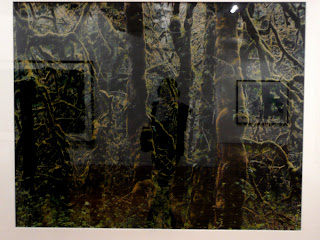A graduate of the Hilla&Bernd Becher school of thought, and former studio mate of Andreas Gursky, Hütte definitely retains the emphasis on sobriety. Despite their monumental scale, his photographs are intensely meticulous in detail; each twig is defined in the tangled green cobweb of the forest floor, creating a state of endlessness and sheer proximity. (Nitihant-2, Canada 2007) It is frightening to think what would happen if the bus broke down here… Devoid of people and narrative, Hütte’s landscapes are like rare white tigers in the zoo-- best appreciated through the safety net of the fence.
Yet despite the aggressive realism, there is also something very romantic, and almost soothing about Hütte’s work. It is like the mild tranquilising effect you get from starting at a Caspar David Friedrich, and never wanting to look away. Is it the common German Geist that knows how to hit the melancholic buttons? Perhaps it is the combination of both; Hütte’s choice of traditional equipment as well as subject matter which emanate such an intense effect. It is rather refreshing to see such large images produced via analogue means, in which one man attempts to conquer the forces of nature single-handedly. Aesthetically, Capulin Fire-1 Diptych 2007 is particularly pleasing; the dancing fiery flames let loose accompanied by drifting smoke are immaculately preserved. This is thanks to the Ditone process, in which the image is developed onto natural paper, allowing the fibres to add texture and emphasise the organic structure of a fire.
From the murky depths of forest foliage to flaming hot fires, to piercingly cold tundra, Hütte’s landscapes surely do not lack in geographical abundance. I left the exhibition with a longing for more. Isolation has never felt so alluring. Finally, for a complete visual kick, try compare and contrast, and before embarking on the Hütte’s travels, check out the new National Geographic collection-cum-store next door on Regent street first – the traditional travel photography on offer there, in the conventional A3 size, seems like coffee table literature compared to Hütte’s mammoths.











